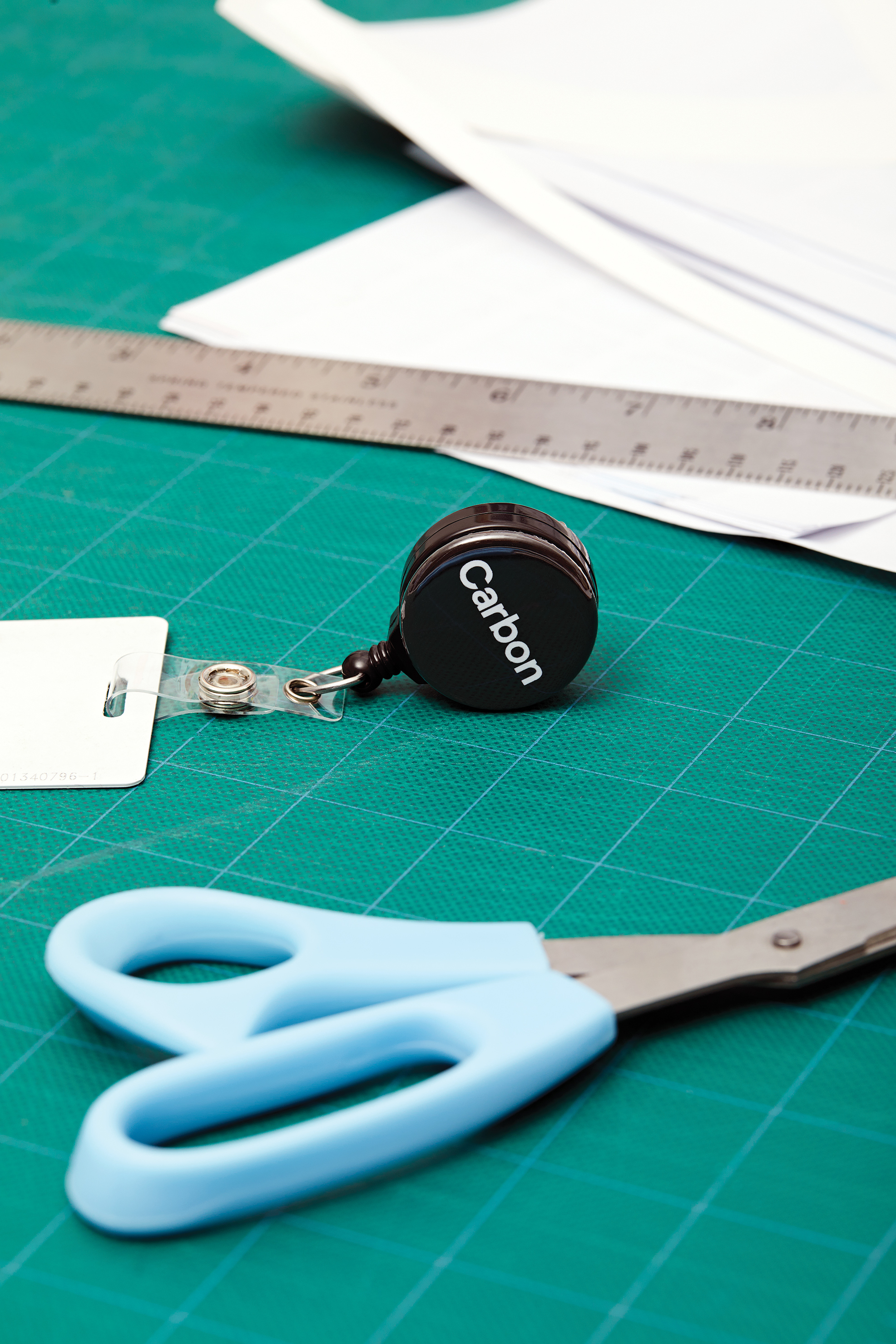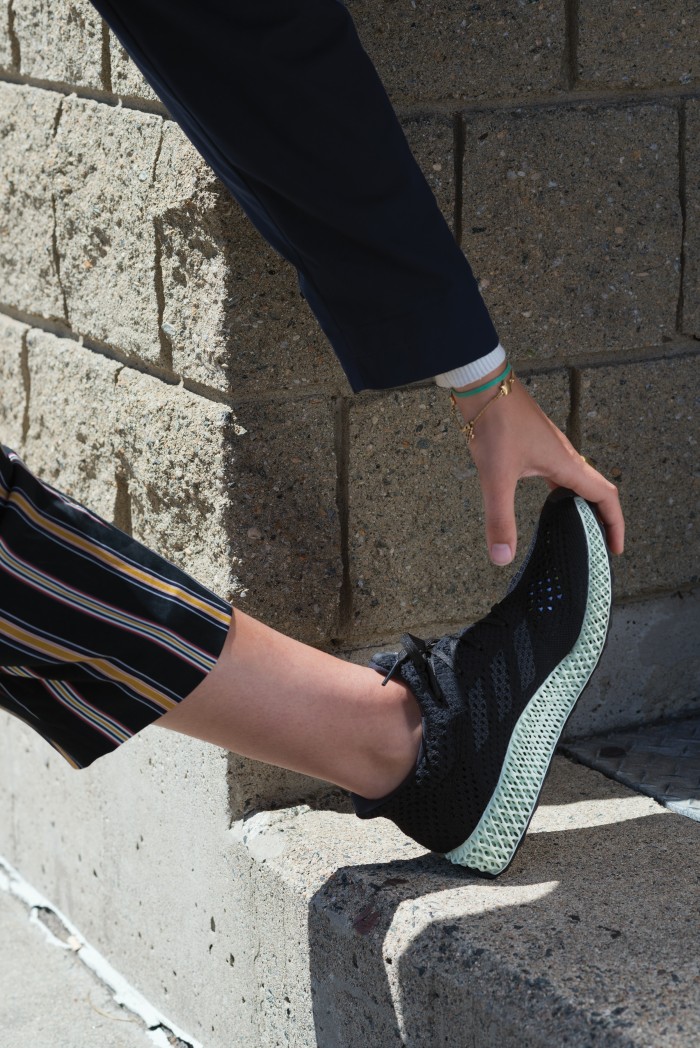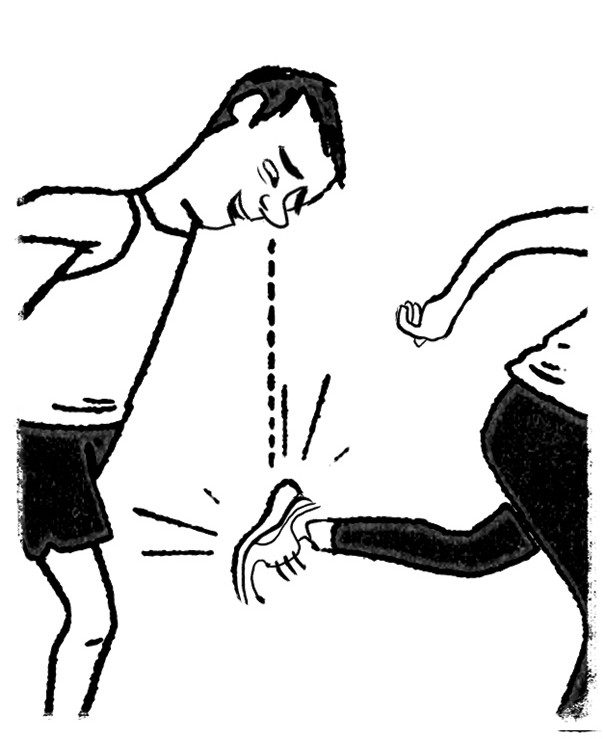Carbon Prints Amazing Materials

A sleek mechanical arm plunges into a pool of what looks like milky gray ink in Carbon’s lab in Redwood City, California (see "50 Smartest Companies 2017.") The black arm slowly moves upwards, pulling a latticed plastic cube out of the bath, shiny and dripping with ink: a large-scale model of the porous structure of bone.
Joseph DeSimone, Carbon’s CEO and cofounder, looks on. DeSimone, a polymer chemist, helped invent these machines, and he still gets a kick out of watching them work. It is a form of 3-D printing, but it’s done in a novel way that is faster than previous techniques and works with many more types of plastics. The way the printer pulls the object smoothly from the pool of milky liquid, millimeter by millimeter, gives the illusion that an existing structure is emerging. In fact, the liquid is a light-sensitive precursor material; a digital projector is continuously projecting ultraviolet light onto the bottom of the lattice, the first of two steps that harden the material to form the plastic object.
Using its process for rapidly printing objects with high-performance polymers like polyurethanes and epoxies, four-year-old Carbon is pursuing an approach fundamentally different from other methods of 3-D printing, which put down layers of plastic one at a time. That limits the quality of many 3-D-printed products, but Carbon fabricates an object in a continuous process, avoiding some typical problems. DeSimone say his technology enables Carbon to print polymer objects rapidly, in some cases thousands of times faster than other 3-D printers, and use a wider range of materials, including rubber-like elastomers and durable, hard plastics.

Technology for 3-D printing has been around since the 1980s; fans have been intrigued by the potential to easily generate objects with complex structures that can’t be made using other techniques, and to personalize objects like medical devices or apparel as easily as different images can be printed on a piece of paper. However, two challenges have kept 3-D printing a niche technology: its slow speed and the limited range of materials for which it’s been suited. Recently, companies like HP, which sells 3-D printers to fabricate high-strength nylon parts, and Desktop Metal (see “The 3-D Printer That Could Finally Change Manufacturing”), whose machine uses various metal alloys, have attempted to make the technology more relevant for manufacturing by increasing its speed and using industrially desirable materials. Carbon joins this increasingly crowded field. Backed with $222 million from investors including GE Ventures and Alphabet’s Google Ventures, the company has created a process it calls “digital light synthesis” rather than 3-D printing, a way of alluding to its novel chemistry.
Adding credibility to DeSimone’s claim that 3-D printing is finally ready to mass-manufacture customized parts is Carbon’s growing list of paying customers. “The volume and speed we can achieve with Carbon’s pioneering digital light synthesis is unprecedented,” says Paul Gaudio, the global creative director of Adidas. “It’s almost magical.” Adidas tried other 3-D printers as it sought to make customized shoes for the mass market, but none of them could operate at large scale. Now it will use Carbon’s technology to manufacture elastomer midsoles for athletic shoes, starting with 5,000 pairs this fall and winter. The company hopes to print millions of shoes, including custom-tailored models, by 2021. Other customers are taking advantage of Carbon’s technology to print parts for electric motorcycles, server farms, and cooling systems, all of which have been difficult or impossible to make with other methods.
Blending Polymers

Before he founded Carbon in 2013, DeSimone spent more than 20 years as a polymer chemist at the University of North Carolina. In 2012, as 3-D printing was becoming popular with hackers using desktop models, he received a call from Alex Ermoshkin, a former student and employee of a drug delivery company DeSimone had started up in the early 2000s. Ermoshkin came to him with a business idea: would he be interested in starting a company to build cheaper 3-D printers?
DeSimone, who had some experience with the technology, was intrigued. He suggested that Ermoshkin do a patent search to see what was missing in the field. Ermoshkin found many descriptions of ways to print three-dimensional objects one layer at a time, some using UV light to link up chemical building blocks and harden them to form polymers. Stereolithography is one of the original 3-D-printing methods, but it has always been limited by the properties of such UV-curable plastics, which have not included durability or flexibility. Also, resulting products formed in layers tended to be weak. Stereolithography is useful for making prototypes, but not for final parts. What’s more, the printers were very slow, taking hours or even days to make large objects.
The two began to think about how to print without stopping. They were inspired, DeSimone says, by the image of the T-1000 humanoid robot rising up out of a pool of metallic liquid to stand on two feet in the 1991 movie Terminator 2: Judgment Day. In the system that DeSimone and Ermoshkin imagined, light patterns would be projected into the bath, like images on a movie screen, as the printer arm moved up. As the light hardened the material, the object would form continuously.
Among the tricky challenges the team had to solve was how to keep objects from sticking to the bottom of the bath. DeSimone came up with the solution: an oxygen-permeable window, which takes advantage of the fact that these types of UV-triggered reactions are stopped by oxygen. It’s a small detail, but a critical one.
Carbon’s vice president of materials, Jason Rolland, says the company has focused on overcoming the limitations of UV-curable polymers, developing blends that offer a wide range of properties. The system can now print with 12 classes of materials—some durable, some stretchy or squishy, some able to bear heavy weights. One, a cyanate ester that can withstand temperatures up to 231 °C, is suitable for making automotive and aerospace parts. Another class, elastomers, includes the squishy materials Adidas is using. DeSimone foresees “an app store for resins” from which the company’s customers can order to print what they need.
Scaling Up
Carbon worked with Adidas on 150 different iterations of the elastomer in its new shoe, which uses a printed midsole with a lattice structure. The structure’s mechanical properties can be tailored by changing the pattern of the lattice’s holes and struts, bringing personalization to a mass scale.
In Carbon’s lobby, a large display screen shows the operating status of all its printers, both on site and with customers. The company sells the devices on a subscription model and then works with customers to select the right materials and designs. Every six weeks or so, Carbon sends out software updates based on what it is seeing in the field—a tactic inspired by Tesla, the former employer of Carbon’s VP of engineering, Craig Carlson. Carbon is now designing machine-learning software to help generate the optimal printing design and parameters for any given product. “We want to see the problems before we print,” DeSimone says.
Keep Reading
Most Popular
Large language models can do jaw-dropping things. But nobody knows exactly why.
And that's a problem. Figuring it out is one of the biggest scientific puzzles of our time and a crucial step towards controlling more powerful future models.
The problem with plug-in hybrids? Their drivers.
Plug-in hybrids are often sold as a transition to EVs, but new data from Europe shows we’re still underestimating the emissions they produce.
Google DeepMind’s new generative model makes Super Mario–like games from scratch
Genie learns how to control games by watching hours and hours of video. It could help train next-gen robots too.
How scientists traced a mysterious covid case back to six toilets
When wastewater surveillance turns into a hunt for a single infected individual, the ethics get tricky.
Stay connected
Get the latest updates from
MIT Technology Review
Discover special offers, top stories, upcoming events, and more.